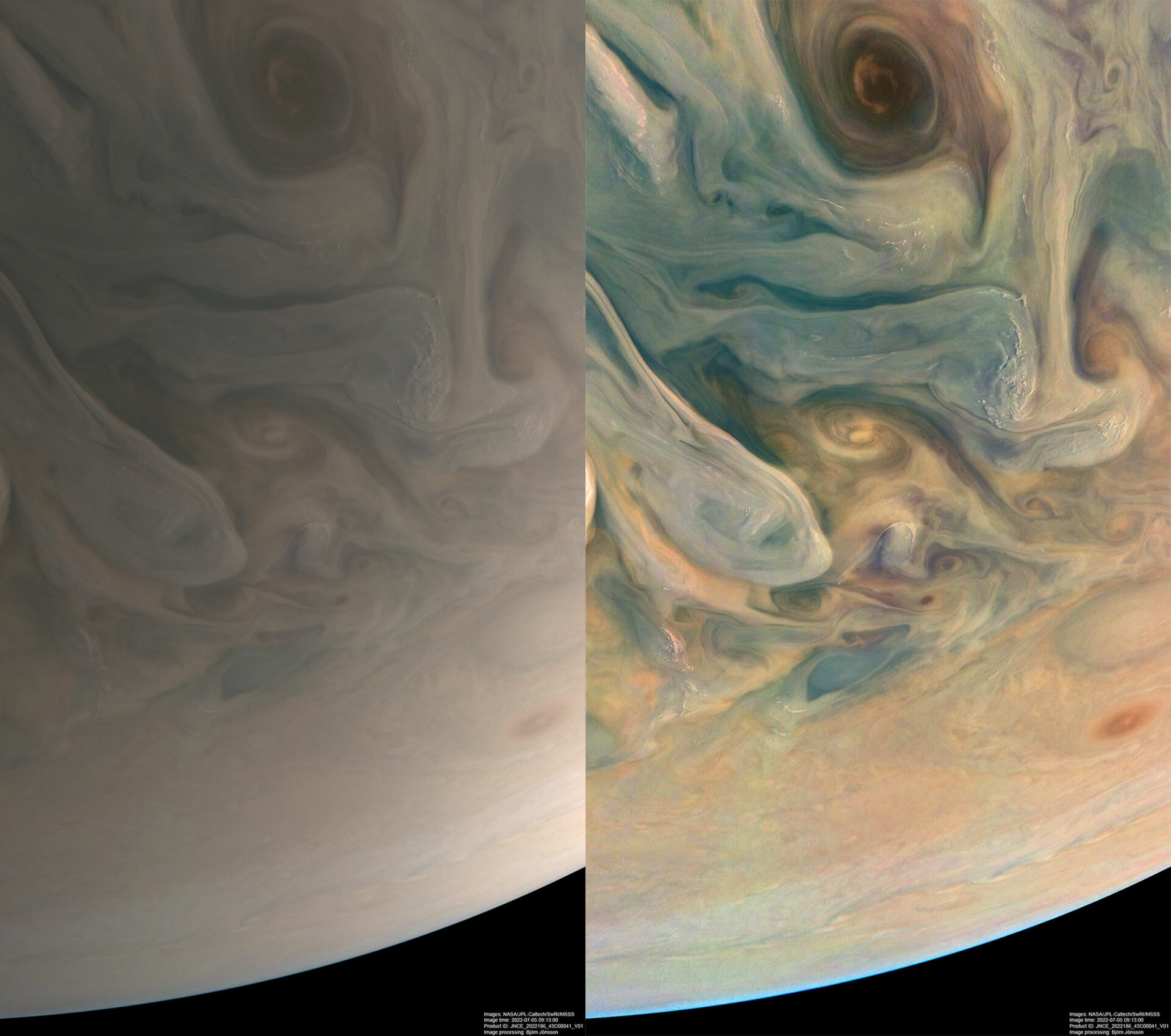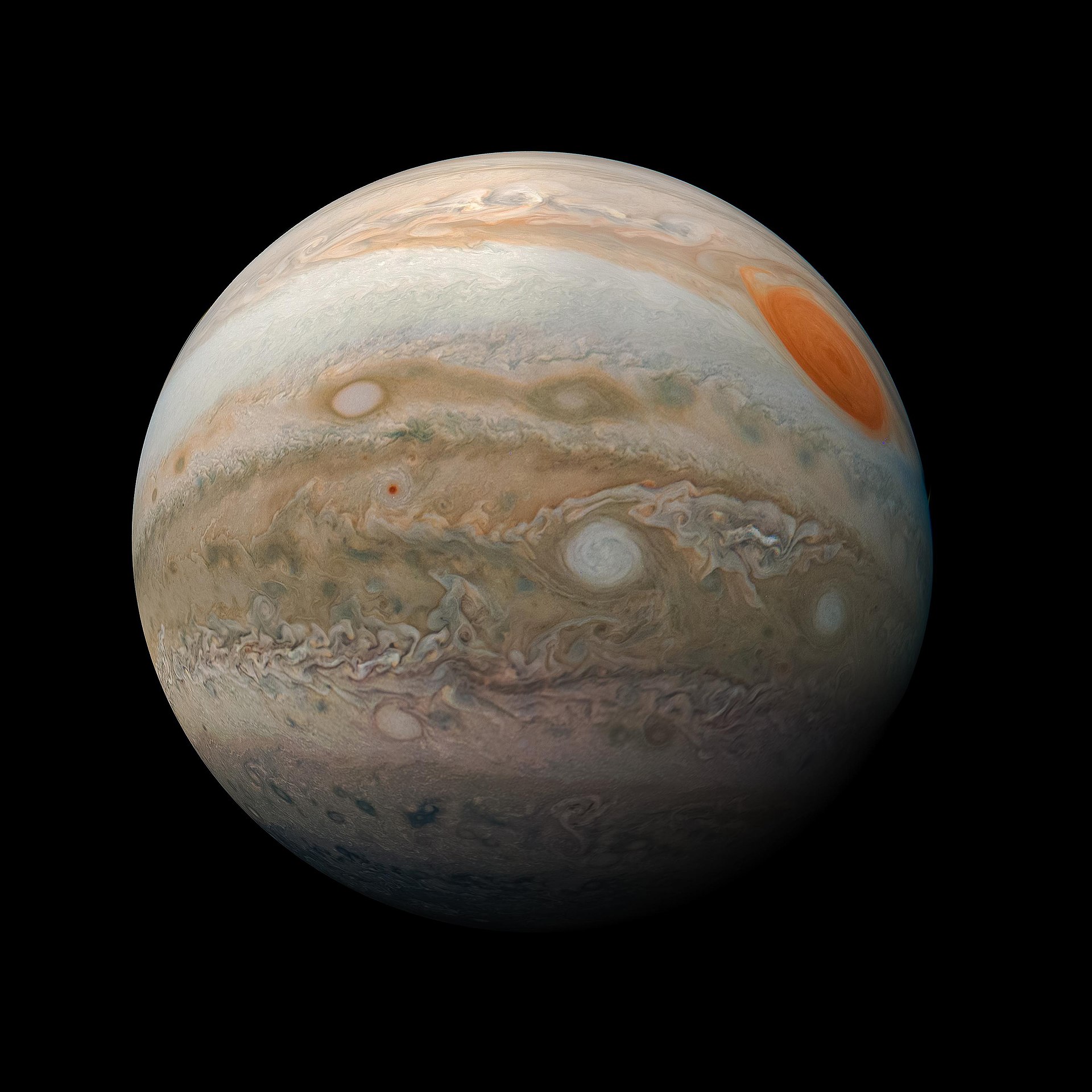We used to think of Jupiter as an orange-brown world with its distinctive feature in the form of a Great Red Spot. But a recent image of Jupiter published by NASA shows the planet in a completely different color palette, showing the giant planet’s clouds in two different formats. On the left, the planet looks as the human eye sees it, in brown-beige colors with a green tint. And on the right is a color–rich version showing details of cloud formations in bright turquoise and green tones.

The images were from the NASA Juno spacecraft, and they were processed by the scientist Bjorn Jonsson, who loves to retouch images. He shares the result of his work with the public.
The “transformation” of observations obtained by spacecraft or telescopes into detailed images is a rather lengthy process that requires professional knowledge of color correction, contrast and balance, which affect the final image. It is possible to process the image so that it looks as close as possible to what we would observe personally if we saw it with our own eyes up close, for example, the image of Jupiter on the left. But it is also useful to make corrections, such as increasing saturation and contrast, to help consider features of the planet, such as the shapes of clouds on the right.
In a more saturated image, you can see the features of Jupiter’s atmosphere, for example, its deep swirling vortices, and different colors can help identify the various chemicals that form the atmosphere of the gas giant.

Jonsson was able to process these images due to the fact that all Juno data is publicly available in raw form on the mission’s website. Members of the public are invited to try their hand at data processing on their own. If you have a talent for processing in Photoshop, then you can try your hand at improving the pictures.
The NASA Juno spacecraft has completed its main mission today and has begun a smooth transition to new orbits in order to study the Galilean moons of Jupiter except for Calisto. Of course, the spacecraft will surprise us more than once with its fascinating images.
Try to take our test and find out what you know about Jupiter.
According to NASA
Follow us on Twitter to get the most interesting space news in time
https://twitter.com/ust_magazine

